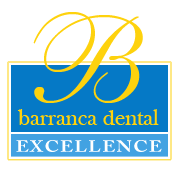[image_frame style=”framed_shadow” align=”right” alt=”The universal numbering system assigns an individual number to each tooth in your mouth. | Irvine Dentist Neda Khodai, Barranca Dental – An Irvine Tradition of Dental Excellence” title=”The universal numbering system assigns an individual number to each tooth in your mouth. | Irvine Dentist Neda Khodai, Barranca Dental – An Irvine Tradition of Dental Excellence” width=”220″ height=”150″]https://www.barrancadental.com/wp-content/uploads/2012/01/UniversalToothNumbering.jpg[/image_frame]
Have you ever wondered just what your dentist was talking about when they told their assistant to “make a note about number 6”? Do you ever get a toothache and wished you could explain just where the problem is to your dentist on the phone? Tooth Numbering systems were developed so that dentists would have a consistent way of referring to particular teeth. While there are over thirty systems in the world today, two are frequently used in the United States today: the Universal Numbering System and the Palmer Notation Method. Since the Universal Numbering System is the preferred system of the American Dental Association and is the most frequently used system, it is the one we will be explaining today.
The Universal Numbering System
The universal numbering system, pictured above, assigns an individual number to each tooth in your mouth. This numbering system assigns a number to all of your thirty two teeth that should be there, so if you have had your wisdom teeth removed, those numbers still exist.
Numbering begins in the upper right of your mouth, with #1 being your upper right wisdom tooth. The count progresses across each tooth on your top row of teeth until you reach the third molar (wisdom tooth) on the upper left side of your mouth, which is #16. You then move down to the lower left side of your mouth, with #17 being your lower left wisdom tooth, and move back to the lower right side of your mouth, ending on #32, your lower right wisdom tooth.
While it sounds a little tricky, practice makes perfect. Take a look at the chart above and try to number your own teeth! Remember though, not everybody has thirty two teeth. If you have had your wisdom teeth remove or other dental procedures, you might need to skip a number.
The Names and Jobs of Your Teeth
Your teeth all have names and functions, and while knowing the number of your tooth helps, it is great to know the name also. The four teeth in the front of your mouth (Top Numbers: 7, 8, 9, 10. Bottom Numbers: 23, 24, 25, 26) are known as incisors. These teeth are mainly used for gripping your food, as well as cutting and shearing. They are very important when it comes to speech, and are of course the most apparent part of your smile.
The next set of teeth behind your incisors (Top Numbers: 6, 11. Bottom Numbers: 22, 27) are the canines (or cuspids). On your upper jaw, canines are also known as “eye teeth”, due to having a long root which points to the eye socket. These teeth are usually long and sharply pointed, and are used by your mouth to hold food while it is being torn. Due to being a bite guide for the rest of your mouth, they are the first teeth to suffer wear. When your canines have been worn down, your other teeth will wear more quickly.
Further back in your mouth are the bicuspids (Top Numbers: 4, 5, 12, 13. Bottom Numbers: 20, 21, 28 ,29), also known as premolars. These teeth are multi-function, with characteristics of both your canine teeth and your molars. These teeth help move food from your canines to your molars for grinding and crushing.
Your last set of teeth are known as molars (Top Numbers: 2, 3, 14, 15. Bottom Numbers: 18, 19, 30, 31). If you still have your wisdom teeth you will have 12 molars, otherwise you will have 8. These teeth are behind your bicuspids and work to grind or crush food.
Practice naming and numbering your teeth while brushing, it will keep you brushing longer and your teeth healthier!
Contact Us!
If you want to try to impress Dr. Khodai with your new knowledge of tooth numbering in person, or just need a regularly scheduled cleaning, it’s time to set up an appointment with Irvine Dentist Dr. Neda Khodai. Call us at 949-553-1111 or click below to get in touch with Barranca Dental Excellence.
[button size=”medium” link=”https://www.barrancadental.com/schedule-an-appointment-online/”]Schedule an Appointment Online[/button]
